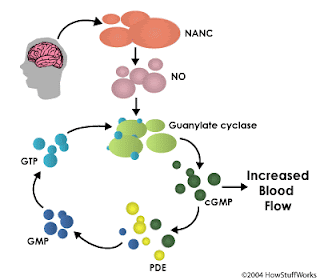Although most people take vitamin D supplements without any problems, it’s possible to take too much. This is called vitamin D toxicity. Vitamin D toxicity, where vitamin D can be harmful, usually happens if you take 40,000 IU per day for a couple of months or longer, or take a very large one-time dose.
Vitamin D is fat-soluble, which means your body has a hard time getting rid of it if you take too much. When you take large amounts of vitamin D, your liver produces too much of a chemical called 25(OH)D.
When your 25(OH)D levels are too high, this can cause high levels of calcium to develop in your blood. High blood calcium is a condition called hypercalcemia.
The symptoms of hypercalcemia include:
- feeling sick or being sick
- poor appetite or loss of appetite
- feeling very thirsty
- passing urine often
- constipation or diarrhea
- abdominal pain
- muscle weakness or pain
- feeling confused
- feeling tired
In some rare diseases, you may be at risk of hypercalcemia even if you have low vitamin D levels and haven’t taken much vitamin D. These diseases include primary hyperparathyroidism, sarcoidosis and a few other rare diseases. See our Hypersensitivity page page for more information.
How do I know if I have taken too much?
A blood test to measure your 25(OH)D levels can tell you whether you have too high of vitamin D levels. If your 25(OH)D levels are above 150 ng/ml this is considered potentially toxic and potentially harmful to your health. You know if your 25(OH)D levels are toxic by a blood test to measure calcium. If calcium is high and 25(OH)D is high, then you are getting too much vitamin D.
Very high levels of 25(OH)D can develop if you:
- take more than 10,000 IU/day (but not equal to) everyday for 3 months or more. However, vitamin D toxicity is more likely to develop if you take 40,000 IU/day everyday for 3 months or more.
- take more than 300,000 IU in a 24 hour period.
If you have taken this much vitamin D, seek medical attention. Your health providers will get your calcium and 25(OH)D levels tested.
The current recommended daily allowances for vitamin D set by the Food and Nutrition Board are conservative, so you don’t need to feel worried about toxicity if you take more than their recommended daily allowance. You can find out more about daily vitamin D supplementation on our page, How do I get the vitamin D my body needs?
What should I do if I think I have taken too much vitamin D?
Have you taken more than 300,000 IU in the past 24 hours OR have you been taking more than10,000 IU/day for the past three months or longer?
- If yes, check to see if you have symptoms of toxicity (listed above); symptoms like feeling sick, feeling thirsty, constipation or diarrhea, poor appetite and feeling confused. If so, you may have hypercalcemia and need medical attention.
- If you do not have any symptoms, you likely do not have hypercalcemia. However, you should get a blood test for 25(OH)D and make sure that you do not have a level above 150 ng/ml. Consider lowering your vitamin D dose. See our page How do I get the vitamin D my body needs? for more information.
- If no, you likely do not have hypercalcemia and are not toxic. If you are still concerned, you may choose to get a blood test to measure 25(OH)D to see what your levels are. See ourTesting page for more information.
- If you have symptoms of toxicity but have not taken more than 300,000 IU in 24 hours or more than 10,000 IU/day for the past three months, you may have a very rare condition that is sensitive to vitamin D. Please see our Hypersensitivity page for more information.
What about children?
The more you weigh, the more vitamin D your body can handle; the less you weigh, the less vitamin D your body can handle. The above cutoffs of 300,000 IU in 24 hours or more than 10,000 IU/day for three or more months apply to average adult weight (125-200 lbs).
So, how do you know if your child has gotten too much vitamin D?
- For children that weigh 25 lbs or less, more than 50,000 IU in 24 hours or 2,000 IU/day for over three months is too much and potentially toxic.
- For children that weigh between 25 and 50 lbs, more than 100,000 IU in 24 hours or 4,000 IU/day for over three months is too much and potentially toxic.
- For children that weigh between 50 and 75 lbs, more than 150,000 IU in 24 hours or 6,000 IU/day for over three months is too much and potentially toxic.
- For children that weigh between 75 lbs and 100 lbs, more than 200,000 IU in 24 hours or 8,000 IU/day for over three months is too much and potentially toxic.
If your child has taken too much vitamin D, seek medical attention.
I already tested my 25(OH)D. Is my level too high?
If your level is greater than 150 ng/ml, this is considered too high and potentially toxic. Seek medical attention if you have symptoms of hypercalcemia (listed above). If you do not have symptoms, consider lowering your level. Please see our pages on 25(OH)D reference ranges and our page on how to get the right amount of vitamin D:
If your level is not greater than 150 ng/ml, then you are not potentially toxic in vitamin D. Please read our pages on vitamin D levels and how to interpret your results:
References
- Cusano NE, Thys-Jacobs S and Bilezikian JP. “Hypercalcemia Due to Vitamin D Toxicity.” In Vitamin D, Third Edition, by Feldman D, Pike JW and Adams JS. Elsevier Academic Press, 2011.
- Vieth, R. Vitamin D supplementation, 25-hydroxyvitamin D concentrations, and safety. American Journal of Nutrition, 1999.





